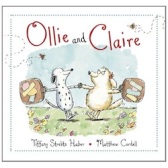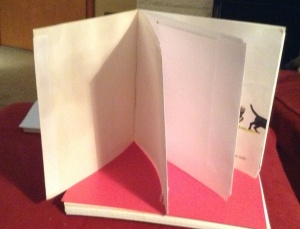Do you have a Poem in your Pocket today? I do! Day 26
*
*
Happy Poem in your Pocket Day!
http://www.poets.org/page.php/prmID/406
Today is Poem in your Pocket Day so select your favorite poem, stick it in your pocket and share it with people throughout the day…what a great idea!
This video explains the reasoning and the details but basically…let’s share poetry!
https://www.youtube.com/watch?v=qt8tzj0ieb4
*
*
There are only 2 days left to submit your poem for the Golden Quill Poetry Contest!
so…
Send
It
NOW!
*
*
Today’s guest blogger has her second picture book, Cock-a-Doodle Oops! coming out next month! What a perfect plan…all rhyming picture books should be released near the month of April, National Poetry Month!
Here is a link to Cock-a-Doodle Oops! Pre order it now!
http://www.amazon.com/Cock-Doodle-Oops-Lori-Degman/dp/1939547075
I am so pleased to have her here and I am genuinely in love with both of her books! They are clever, funny and full of wonderful lyrical verse!
*
*
So, without further ado, I’m honored to present today’s
Golden Quill Guest Blogger
Lori Degman!
Use Book Dummies to create pacing and page turns
*
When writing a rhyming picture book, you typically follow the same formatting throughout the manuscript – either couplets, quatrains, limerick . . . But, if you break up the formatting, you can improve your story’s pacing and create effective page turns. A great way to do that is to make a book dummy and play around with the lines of your verse.
Here are some examples:
In my first book, 1 Zany Zoo, Colin Jack decided to move the last line of the following stanza to create an awesome page turn!
*
10 rowdy bears led a big zoo parade.
The animals modeled the costumes they’d made.
They waved to the crowd from their traveling stages.
The zookeeper shouted,
*
*
GET BACK TO YOUR CAGES!
In my new book, Cock-a-Doodle Oops!, I separated the last line of the book from the rest of the stanza to make the punch line work. Let me set up the joke: Rooster leaves for a week’s vacation to the beach and, while he’s gone, the other animals can’t wake up the farmer. Rooster returns with a cold and can’t crow. When they finally wake the farmer, here’s what happens:
He joined them outside and pulled rooster aside.
“Your crow had a bit of a screech!
I see that you’re sick and I’ve got just the trick,
What you need is . . .
a week at the beach!
*
*
Here’s an example from Corey Rosen Schwartz’s new book, Goldi Rocks and the Three Bears. In the book, the three bears are looking for a soprano for their rock band and, following the tradition of Goldilocks, they find Goldi asleep in their house and learn she can sing a perfect high C. Here’s the last stanza:
Their albums now top all the rock charts.
A countrywide tour has been planned.
The fans scream and shout.
They’re crazy about . . .
Goldi Rocks and the Great Three Bear Band!
*
*
In Tiffany Strelitz Haber’s sweet book about true friendship, Ollie and Claire, dividing the last stanza over three pages sets up the pacing:
Well, let me just say, and I hope it’s okay,
for whatever you think this is worth –“
*
“I’m SO glad it’s you!”
“I’m so glad it’s you, too!”
*
And they set off to travel the earth!

Another way to create good page turns is by adding transition words that are not part of the verse. Lisa Wheeler does this in her book, One Dark Night. The story goes back and forth between mouse and mole, and giant bear. Lisa moves between scenes by using phrases like:
Then, one dark night . . .
and Meanwhile . . .
*
Or, you can insert a repeating line that is not part of the verse, as in Karma Wilson’s The Cow Loves Cookies. Periodically, between the stanzas, comes the line: But the cow loves cookies. Then, when you think you’ve reached the end, you turn the page:
*
(But the duck loves quackers.)
*
So, when you make your book dummy, try breaking up the stanzas to improve the pacing or create great page turns!
*
*
Bio:
Lori Degman is a teacher of Deaf/Hard of Hearing students by day and a writer of picture books by night, weekend and school holiday. Her debut picture book, 1 Zany Zoo, illustrated by Colin Jack, was the winner of the Cheerios New Author Contest and was published by Simon & Schuster in 2010. Her second picture book, Cock-a-Doodle Oops!, illustrated by Deborah Zemke, will be released by Creston Books in May, 2014.
*
Website http://loridegman.com/loridegman.com/Home.html
Blog http://www.loridegman.blogspot.com/
Facebook https://www.facebook.com/LoriDegmanAuthor
*
*
Thank you Lori Degman!
____________________________________________________________________________________________________
RhyPiBoMo Daily Lesson: Thursday, April 24th
By Angie Karcher © 2014
Lesson 25
What is a Picture Book Dummy?
*
It is an illustrator’s tool that author’s also use to divide their story up into page breaks so they can make sure it fits into the traditional picture book format of 32 pages. It is an actual, physical book that is created only for the author’s benefit and is not to be submitted to an editor. It also helps authors determine if their page breaks are in the right places, help with pacing and will show weaknesses in the text, based on the page turns. It will ensure that there are illustration possibilities on all pages.
*
It is actually quite a bit more complicated than that but that is the gist of it.
*
Here are some terms you should know:
Picture Book Format – the way a traditional picture book is divided up to have 32 pages
*
Page Break – determines where the text is placed on the pages
*
Front Matter – anything that goes in the beginning of the book that is not the story text. For example, the title page, the table of contents, the acknowledgements, etc.
*
Opening Scene – the first setting at the beginning of the story
*
Full Spread – an illustration that covers both pages when the book is open flat
*
End Papers – decorative pages at the beginning and end of the book, opposite the front and back cover
*
*
Other important info:
You will only have 24 pages of text for you story.
Some pages can be single (text/illustration) and some can cover both pages as a double page. (text/illustration)
There are certainly other sizes of picture books but this is the typical example
*
This is a visual example of how the pages are divided:
There are so many great resources on making a picture book dummies, I thought I would give you the basics to get you started as I can’t explain it better than these resources below.
*
Resources:
How to Make a Picture Book Dummy 9 Easy Steps
by illustrator Wendy Martin
http://wendymartinillustration.com/wordpress/how-to-make-a-picture-book-dummy-in-9-easy-steps-e-book/
*
Basic Picture Book Construction
http://editorialanonymous.blogspot.com/2008/10/basic-book-construction.html
*
Picture Book Dummy, Picture Book Construction: Know Your Layout
By Tara Lazar
http://taralazar.com/2009/02/22/picture-book-construction-know-your-layout/
*
How to Create a Book Dummy for Your Children’s Picture Book
http://www.ehow.com/how_4504619_dummy-childrens-picture-book-story.html
*
How to Make a Picture Book Dummy…and Why
http://www.ochiltreebooks.com/Assets/Pdf/FWApictureBookDummy.pdf
*
*
Here are a few examples of the actual dummies that I made and use…
*
*
1)
Folded printer paper held together with yarn…This was very quick to make and text could easily be added on sticky notes or taped on the pages for easy adjusting and rearranging.
Very Simple…Yarn, paper and a hole punch!
2)
We are big recyclers at my house, so I have been looking back through my hundreds of book club, paper back, picture books from when I was teaching Kindergarten and selected some that aren’t “loved” or NEED to be recycled.
I cover each page with two sheets of printer paper folded over each the end. I used the little sticky dots for scrap booking to make this example. It does make it a bit thicker but it’s faster than tape. Basically, I cover all the pages with paper, and I cover the front cover with tag board and “voila” I have a new book.
This is much sturdier than the folded paper version but takes at least 30 – 45 minutes to make. I decided, rather than to pass on or donate a few of these “less than wonderful” paperback books to kids, I would attempt to use it in writing a SPECTACULAR picture book of my own! It really is nice if you decide to add some sketches in for good measure to ensure the illustration possibilities of the book.
 You scrap bookers will know that the blue gadget in the picture is a glue dot applicator…You just push it down and the dot comes out where you want it…very cool and life has never been the same since I found it! LOL
You scrap bookers will know that the blue gadget in the picture is a glue dot applicator…You just push it down and the dot comes out where you want it…very cool and life has never been the same since I found it! LOL
This is the book page covered with printer paper
Here is the recycled paper back book covered with printer paper, ready to become an all new picture book.
And…Gracie is all worn out from helping me make these dummies!
3)
My last example is nice because it can be re-used over and over again.
I used a plastic 3 prong folder, added 16 clear page protectors and 5 page dividers with tabs.
All you do is slip each page of your text into the protector.
Then, add the different elements of a picture book on the tabs so you can make sure your text fits into the criteria.
When you are completely finished with this dummy, pull the pages out, in the order you have added then, staple it together and file.
Now, your dummy folder is ready to use again.
Three prong plastic folder with clear page protectors
*
*
 In this photo, it looks like the order of the tabs is backwards, but it’s not.The first tab is the green one on the right, then the yellow, the blue, the purple and the orange in order from front to back.
In this photo, it looks like the order of the tabs is backwards, but it’s not.The first tab is the green one on the right, then the yellow, the blue, the purple and the orange in order from front to back.
*
*
Okay, this was the crash course on picture book dummies but I wanted to explain what it is and how important it can be for your writing process before we get going next week on more detailed information on writing picture books. You need to think in terms of these page breaks when you are writing and revising. I wish I had known years earlier about picture book dummies!
*
*
Writing Prompt: Create a simple Picture Book Dummy for one of your manuscripts…see how it fits!
*
*
Okay, now do everything else on the pledge for today and don’t forget to comment on today’s blog post!

RhyPiBoMo PledgeRhyPiBoMo Pledge Please comment ONLY ONE TIME below for a chance to win today’s prize! Prizes will be drawn by Random.com next Sunday for the previous week. To be eligible for a prize you must be a registered participant and comment after each days lessons.

















I agree with Linda above, RhyPiBoMo has been like a month-long conference–so much to come away with–thanks!
Making a dummy is hard. There are so many possibilities once you start cutting up the text. I will keep at it.
Thanks, Angie.
Excellent post, Lori and Angie. Great tips on dummies. Great rhyming time to be had by all over here. Lori, I have preordered your book that comes out in May. I live on a farm and so I gravitate to those books. I write them too. 🙂
Thanks, Lori and Angie for the useful examples and visuals to help us create PB dummies. I appreciate all of Lori’s suggestions for how to make the page turns more compelling.
I have a question for Lori. Is it ever a good idea to separate out some of these final lines (as you imagine they would be in the published version) in the manuscript that you submit to an editor/agent? I’ve generally read that you shouldn’t have extra spacing beyond the standard double-spaced submission, but I can see how at some points in the manuscript, that extra spacing might help an author emphasize a punchline so that it stands out to the editor/agent reading the submission. (I understand the dummy is for the author’s eyes only, but I do wonder if the actual manuscript submission might benefit from some additional spacing as well, as long as it eases the reading process for the editor or helps the editor understand what the author is trying to do with the rhyme.)
Great examples to show how clever page turns can make all the difference!
I checked out 7 rhyming picture books yesterday, and what are the chances–one was Lori Degman’s 1 Zany Zoo! Love it! Also wanted to share that my favorite way to make a book dummy is with a pad of sticky notes, turned sideways like a book. I can’t fit all the text on the pages, but at least I can see how I would arrange it. Thanks for this very helpful post, Lori and Angie!
Thanks for the dummy book lesson. It’s a great way to know whether or not your story has enough “scenes” for a PB.
Lori, you truly are a queen of rhyme! Thanks for tips on pacing!
Angie, appreciate all the dummy info 😀
Dummies definitely are helpful for writers to use in order to familiarize themselves with PB formatting. Thanks!
Enjoyed the post. The Library at the Mall had poems printed on paper for poem in a pocket day for people to take home, read, and do whatever they wanted with. Hope you enjoyed your day!
I can’t wait to get my hands on Cock-a-doodle Oops, Lori! Thanks for all of the tips on page turns and pacing. I’m lazy so I use a one-page dummy, Angie. I’ll share the GROG link on the FB page.
I agree, Lori, that using a book dummy for pacing is essential. Writers who aren’t illustrators don’t usually think to do that, but it would help them a lot- for pacing, for paring down their text and for moving the story forward from page to page. I eagerly await the great-titled Cock-a-Doodle Oops!
So much wonderful info in your posts, Angie!
Had only dummied one book before today – and I LOVE the process. Makes so much sense to me. Just did it for one of my WIPs – and it gave me some great insight. Thanks to BOTH of you!
Thanks for all the dummy ideas. and links
This is what I’ve done at times-take a picture book that you like or think is similar to yours. Use sticky notes with your words on each page. Now read your book. (just sticky notes) You’ll see how effective the page turns are.
Thanks Lori and Angie. I’ll miss this when it’s over.
Fabulous ideas to make my own picture book dummy. Thanks!
Angie and Lori, I love all the tips on how to make a PB dummy. Thanks!
I like paper PB dummies. You really get a sense of page turns.
Thanks for the reminder on how to make a dummy.
Thanks so much, everyone, for your feedback and sweet comments about my books! I learned a lot from Angie’s post too! She amazes me!! To answer Melanie’s question about spacing in the manuscript: I attended Lisa Wheeler’s bootcamp several years ago and she convinced me to use creative spacing in my manuscripts – when appropriate. It helps the reader get a feel for the pacing you’re trying to create. Just don’t go overboard! For me, it really helps set up a punchline. When I submitted Cock-a-Doodle Oops!, I left a few lines before the last line and I think that gave it extra oomph! I have a couple of manuscripts where I break away from the structure of the verse, but again, I do it sparingly. Hope this helped!
Thanks, Lori! This helps.
Still acquring new knowledge everyday, The book dummies are a great tool. I love your book, 1 Zany Zoo, Lori. Thank you. ~Suzy Leopold
Great post. Picture book dummies are very helpful. And creating page turns is great advice.
(I’ve been away from cyber access a few days….oh no…time to catch up!)
What a fun and informative post today….Thanks, Angie! I always celebrated Poem-in-Your-Pocket Day [when I was teaching fifth grade] by inviting every student to choose a favorite poem that reflected something about a staff or faculty member that they especially liked. Then, each child would be given time during the day to deliver the poem in a hand-decorated paper pocket, of course, to read it aloud, and leave it as a gift. Usually, the pocket-and-poem remained posted on the wall or file near that recipient for the remainder of the school year, and often into the next school year as well!
Making a dummy and reading it aloud works for me!
Thank you for the crash course! I’ve been meaning to make one of these so seeing your approach is very helpful.
Thank you for the info on pacing and formatting, Lori, and for the info on PB dummies, Angie. I saw Cock-A-Doodle Oops! read by Marissa Moss on YouTube. Wonderful story!